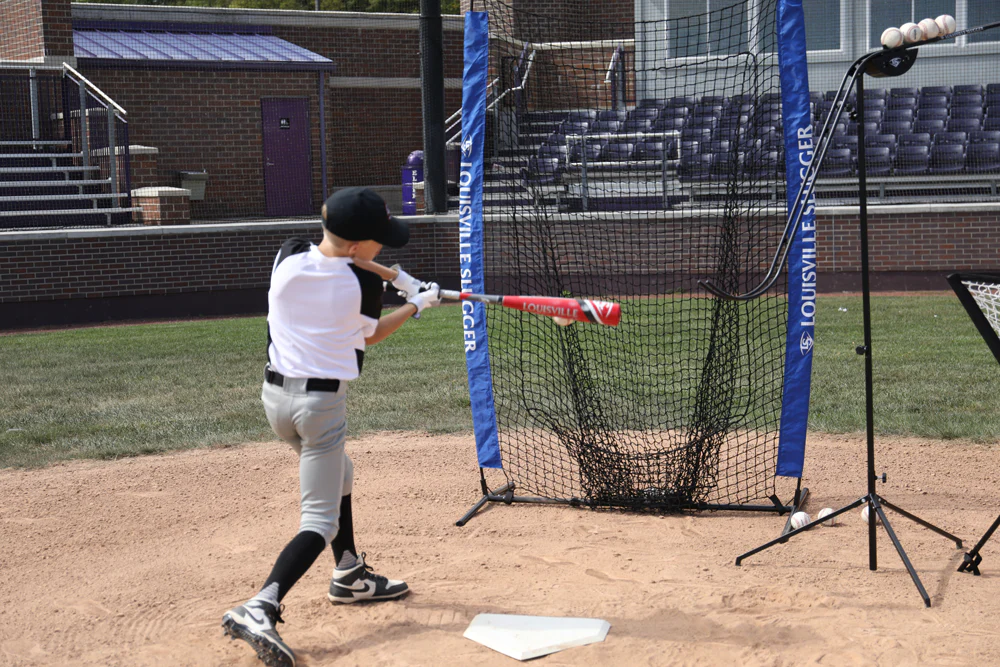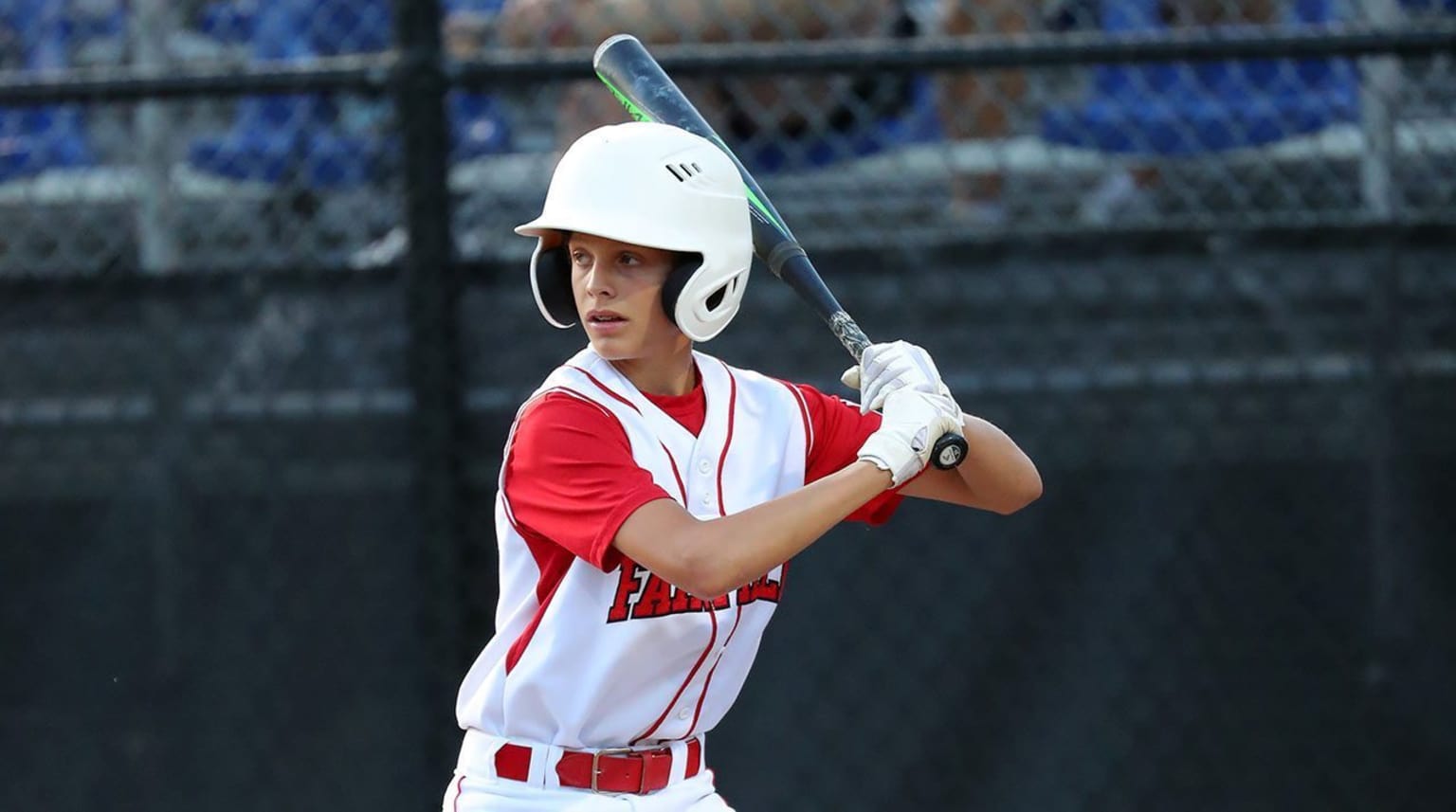
When it comes to baseball, making solid and consistent contact with the ball is every hitter’s goal. Achieving that perfect contact point—where your bat meets the ball—can make a huge difference in your performance. It not only helps generate power but also gives you better control over the direction of the hit, increasing your chances of getting on base. So, how can you improve that crucial connection? In this post, we’ll walk through some key tips to help you develop a consistent contact point and become a more effective hitter.
1. Perfect Your Stance and Setup

Everything starts with a solid foundation. If your stance and setup aren’t right, your contact point will suffer. A good, balanced stance is essential for consistent performance. Begin by standing with your feet about shoulder-width apart. Keep your knees slightly bent and make sure your weight is evenly distributed between both feet. Position your hands comfortably, with the bat resting either on your shoulder or just behind your head. When you get into the habit of setting up the same way every time, you’ll have better control and consistency in your swing.
2. Work on Eye-Hand Coordination

One of the most critical skills for making consistent contact is having good eye-hand coordination. To improve this, you need to train your eyes to track the ball from the pitcher’s hand all the way to the plate. Try doing drills like hitting off a pitching machine or engaging in live batting practice. The more you practice tracking pitches, the better you’ll become at anticipating where the ball is and making the right adjustments with your bat.
3. Focus on Timing and Rhythm

Timing is everything in baseball. If you can sync your footwork and swing with the pitcher’s delivery, you’ll greatly improve your chances of making solid contact. Focus on the pitcher’s wind-up and release point, and practice timing your stride and swing. A smooth, rhythmic swing is key. Work on developing a flow that helps you stay in control, with a fluid load and a bat path that’s easy to repeat. This kind of consistency will help you make contact at just the right moment.
4. Plate Coverage and Adjustability

To really up your game, you need to be able to cover the entire plate. Whether the pitch is inside, outside, or right down the middle, you should be ready to adjust your swing. Practice hitting pitches at different locations and work on adjusting your swing accordingly. The better you get at adapting to different pitches, the more likely you’ll make consistent, solid contact, no matter where the ball is thrown.
5. Consistency in Your Swing Path

A consistent swing path is vital for hitting the ball with power and precision. Try to keep your swing on a smooth, repeatable path that allows you to make good contact every time. Avoid making uppercut or chopping motions that can throw off your consistency. Instead, focus on swinging slightly upward through the hitting zone, which gives you the best chance of driving the ball and getting that solid, line-drive contact.
6. Bat Control and Making Mid-Swing Adjustments

One of the most advanced skills for improving your bat-to-ball connection is developing bat control. This means being able to make slight adjustments during your swing. Practicing drills that involve varying pitch speeds or heights can help you improve this skill. For example, try hitting off a tee with pitches set at different heights or use a batting cage with adjustable speeds. Being able to adjust mid-swing to different pitches will make you more versatile and effective at the plate.
7. Film Your Swings for Self-Analysis

Sometimes, the best way to improve is by taking a step back and analyzing your swings. Record your batting practice or in-game at-bats and review the footage later. Look for any patterns or inconsistencies in your bat path, contact point, or body positioning. The more you study yourself, the more you’ll be able to pinpoint areas that need adjustment. Don’t hesitate to ask coaches or experienced players for their feedback—they might see things you missed.
FAQs About Developing a Consistent Contact Point
Q: How can I improve my stance for better contact?
A: Start by making sure your feet are shoulder-width apart and your knees are slightly bent. This balanced stance helps you stay grounded and ready to react. Also, pay attention to where your hands are positioned—they should be relaxed, either on your shoulder or just behind your head.
Q: What drills can I do to improve eye-hand coordination?
A: Try hitting off a pitching machine, working with a soft toss, or doing live batting practice. These drills help you focus on tracking the ball from the pitcher’s hand to the contact point, which is key for making solid contact consistently.
Q: How can I improve my timing?
A: Work on syncing your stride and swing with the pitcher’s wind-up and release point. Pay attention to when the pitcher starts their motion and practice timing your movements to match it. Developing a smooth, rhythmic swing will help with your timing.
Q: How do I cover the whole plate?
A: Practice hitting pitches at different locations—inside, outside, and down the middle. By adjusting your swing to each pitch’s location, you’ll improve your ability to make contact no matter where the pitch is thrown.
Q: What if my swing feels inconsistent?
A: Focus on keeping a consistent swing path. Avoid making unnecessary motions, like uppercuts or chops. A controlled, upward swing through the hitting zone will help you make more consistent contact.
Q: How do I make adjustments during my swing?
A: Practice drills that focus on adjusting to different pitches, such as varying speeds or heights. The more you can adjust your swing in real-time, the better you’ll become at making solid contact with different types of pitches.
Q: Should I film my swings for improvement?
A: Absolutely! Recording your swings and analyzing the footage is a great way to spot any issues with your technique. You can also get feedback from coaches to help identify areas for improvement.
By focusing on your stance, hand-eye coordination, timing, swing path, bat control, and adjusting to different pitches, you can improve your bat-to-ball connection and become a more consistent hitter. Remember, the key to improvement is consistent practice, a good mindset, and always being open to feedback. With time and effort, you’ll develop a solid and repeatable contact point that will make a big difference in your performance at the plate.
Conclusion
Improving your bat-to-ball connection is essential for becoming a more effective hitter in baseball. By focusing on key areas like your stance, eye-hand coordination, timing, swing path, bat control, and the ability to adjust to different pitches, you can develop a more consistent contact point that leads to better performance at the plate. Remember, this process takes time and dedication, so be patient and stay committed to practicing regularly. Whether you’re hitting off a tee, facing live pitching, or analyzing your swings on video, each step you take will bring you closer to achieving that solid, consistent contact. With the right mindset and consistent effort, you’ll see improvements in your ability to drive the ball and increase your chances of success on the field. Keep working hard, and the results will follow!
